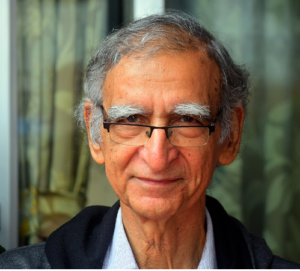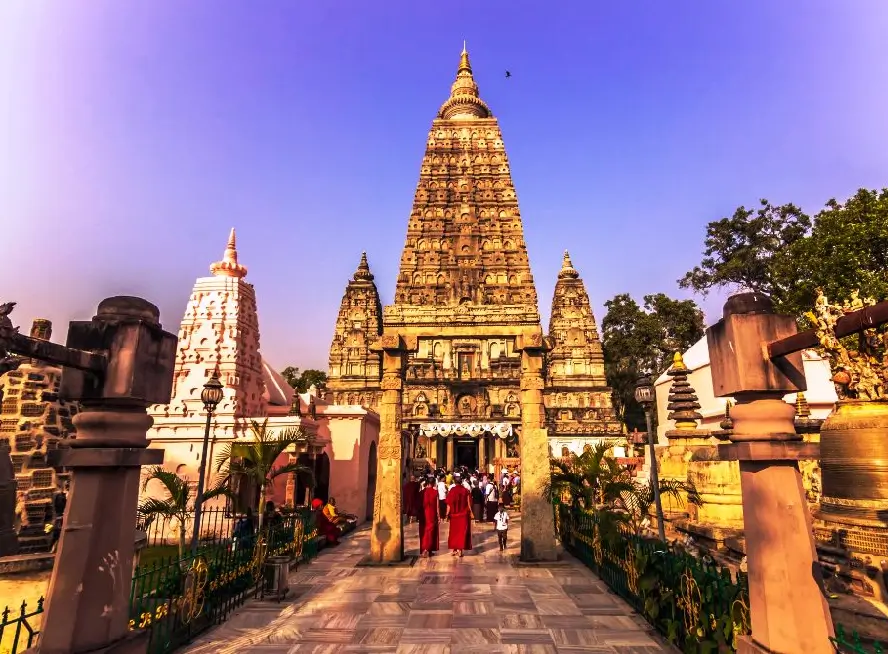Ram Puniyani

(Asian independent) Mahabodhi temple in Bodhgaya, near Patna is of great significance to followers of Buddhism as Lord Gautam Buddha got Nirvana here. This temple has been controlled by the Bodh Gaya Temple Act 1949 and BTMC (Bodh Gaya Temple Management Committee) manages it. As per this the controlling board of the temple has an equal number of Buddhists and Hindus. From this February many monks are protesting against this Act of 1949 and want that only Buddhists should be part of the board, which controls the temple affairs.
The protests have a long history as due to the mixed nature of the controlling body there has been a gradual Brahiminization of this temple. One Akash Lama sitting on the protest aptly put it, “This is not just about a temple; it’s about our identity and pride. We are putting forward our demands peacefully. Until we receive written assurance from the government, this protest will continue indefinitely.” The monks sitting on the protest say that “The Mahabodhi Mahavihara is being Brahminized. The influence of Brahminical rituals in the management and ceremonies of the temple is increasing, deeply hurting the faith and heritage of the Buddhist community.”
As such, Indian history is a long story of struggle between Buddhism and Brahmanism. Buddhism gives the message of equality while Brahmanism is based on birth based hierarchy of caste and gender. Buddha’s primary message was against the then prevailing values of caste and gender based inequality. In due course Buddhism spread all over and with the embracing of this religion by Emperor Ashok, it spread further and to other countries also, particularly South East Asia. Ashok had sent his messengers to many countries to give the message of Lord Buddha.
Buddha also had called for stopping the unnecessary sacrifice of animals, particularly cows in the prevalent rituals. All this hurt the social and economic interests of the Brahmins, who were uncomfortable with the spread of Buddhism.
To their great relief Pushyamitra Shung, the ‘Commander in Chief’ of Ashok’s grandson Brihadrath, murdered Brihadrath and came to power. He established the Shung dynasty. With this there was a resurgence of Brahmanism and eclipse of Buddhism. He “actively persecuted Buddhists… He is said to have burned Buddhist monasteries, destroyed stupas, and even offered rewards for Buddhist monks’ heads, leading to a decline in Buddhism’s influence and a shift in favor of Brahmanism.”
Later Shankaracharya of Kaladi, a very influential philosopher, argued for Brahmanical philosophy. His time period is mired in controversy; it is traditionally believed that he lived from 788 to 820 CE. However, some scholars propose earlier dates, with some suggesting a birth as early as 507-475 BC. Whatever that is, it preceded the ‘invasions’ of Muslim kings from the North West.
His aim was to sanitize Brahmanism by getting rid of unnecessary rituals. His focus was philosophically opposed to Buddhist philosophy. Sunil Khilnani writes, “Throughout the subcontinent, he engaged in verbal combat with Buddhist philosophers, who taught as Buddha had, such doctrines as the momentariness of all things and the denial of the existence of the deity.” (Incarnations: India in 50 Lives, p 84, Allen Lane, UK, 2016) Shankar was for status quo and regarded ‘World as an illusion’. Buddha regarded the World as real where miseries prevailed and by implication these should be addressed and rectified.
Overall due to these attacks Buddhism disappeared from the country till Babasaheb Ambedkar converted to Buddhism with a large number of his followers. Earlier Bhakti Saints also talked of some of the values originating from Buddha, like opposition to caste. Many of these saints were persecuted by the prevailing Brahmanism.
The major transition for equality of dalits began during the freedom movement with Jotirao Phule and Savitribai Phule’s yeoman efforts in the area particularly of education and other social reforms. As these started picking up, the values of Brahmanism were challenged. The reactions of Brahmanism to this emerging challenge came in the political form of Hindu Mahsabha and later more assertively through RSS. These organizations in a way were the expressions for maintaining ‘status quo’ and imposition of Brahamnical values. They upheld Manusmriti as a symbol of their goals.
India is a diverse country and imposition of caste and gender hierarchy is marching under the banner of Hindu Rashtra, Hindutva, and Hindu Nationalism. The march towards equality was primarily being articulated by Ambedkar through his Mahad Chavadar Talab, burning of Manusmiriti and Kalaram temple entry amongst many others. The anti colonial National movement tried to accommodate the demands of this social change to some extent, while Hindutva politics either openly opposed it or bypassed these issues.
As far as religion’s playground is concerned this modern counter revolution led by RSS and company has a multipronged approach. As in the case of Mahagaya Bodhi temple they enter the management of temples which is a major strategy. The other one is to co-opt the dalits through social engineering and working amongst them and propagating that there should be harmony amongst all castes, Samajik Samrasta. This is in contrast to Ambedkar’s goal of annihilation of caste.
On similar lines the attempt is also on to Brahmanize Sufi Dargahs. Baba Budan Giri in Karnataka and Haji Malang near Mumbai are the places which are being claimed to be Hindu places of worship. The most interesting example is that of Sai Baba of Shirdi. Yoginder Sikand in his book ‘Sacred Spaces’ gives a good glimpse of the syncretic nature of Shirdi Sai Baba. But now it’s Brahminization is fairly complete, “ Warren, an expert on Sai Baba’s thought, points out: “While Sai Baba was claimed by both Muslims and Hindus, his core approach to God-Realization had a distinct Islamic stance, and he never taught specifically Hindu doctrines and rituals. Sai Baba has, however, been almost completely assimilated and reinterpreted by the Hindu community.”
We are living in strange times where religion is being blatantly used for political agenda. The Buddha temple is being controlled by a Brahmanical path; the Sufi shrines are being Brahmanized. The agitation by Buddhist monks to restore their sacred place to their norms and beliefs is one such example of opposition to impose the norms which are totally opposed to equality and non violence as preached by Lord Gautam Buddha.








